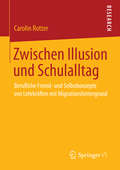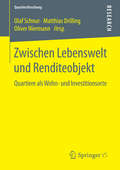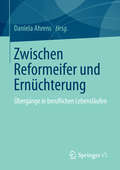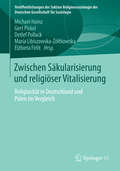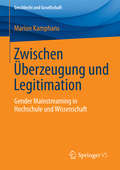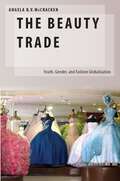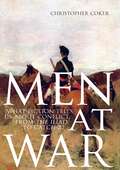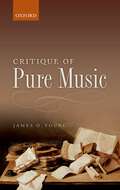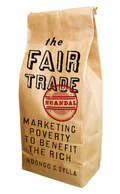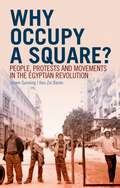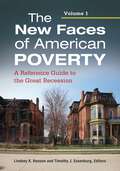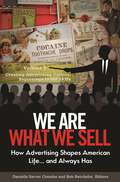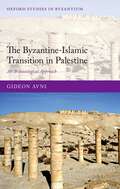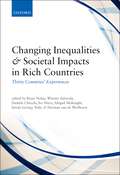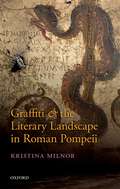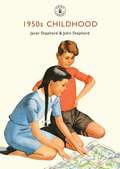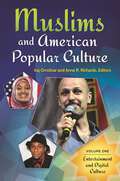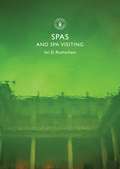- Table View
- List View
Zwischen Illusion und Schulalltag: Berufliche Fremd- und Selbstkonzepte von Lehrkräften mit Migrationshintergrund
by Carolin RotterSeit einigen Jahren wird von bildungspolitischer Seite das Ziel verfolgt, den Anteil an Lehrkräften mit Migrationshintergrund im deutschen Schulsystem zu steigern. Mit diesen Lehrkräften wird die Hoffnung verbunden, den Bildungserfolg von SchülerInnen mit Migrationshintergrund zu verbessern. Vor diesem Hintergrund wurden im Rahmen der hier vorgestellten Untersuchung nicht nur Lehrkräfte mit Migrationshintergrund, sondern auch SchulleiterInnen, Lehrkräfte ohne Migrationshintergrund und SchülerInnen mit und ohne Migrationshintergrund nach ihren beruflichen Selbst- bzw. Fremdkonzepten befragt. Rekonstruiert werden verschiedene Typen, die sich darin unterscheiden, welche Bedeutung dem Migrationshintergrund als Merkmal von Lehrkräften zukommt. Die Ergebnisse werden vor dem Hintergrund des Diskurses zur Lehrerprofessionalität und des migrationspädagogischen Diskurses diskutiert.
Zwischen Lebenswelt und Renditeobjekt: Quartiere als Wohn- und Investitionsorte (Quartiersforschung)
by Olaf SchnurWohnquartiere stehen im Mittelpunkt eines dynamischen Spannungsfelds lebensweltlicher und investiver Interessen. Die BeitragsautorInnen beleuchten die unterschiedlichen Quartiers- und Akteursperspektiven und thematisieren beispielhafte Spannungsfelder des Verhältnisses zwischen Wohnungsunternehmen, MieterInnen und Kommunen: Während die öffentliche Hand dem Quartier als Ort von Inklusion und Vernetzung eher eine integrative Funktion zuschreibt, betrachtet es die Immobilienwirtschaft vor dem Hintergrund einer global agierenden Akteurskulisse. Das „ Quartier“ wird hier immer öfter in eine Strategie der Vermarktung des Wohnraumangebotes eingebettet und aus einer konsum- und lebensstilorientierten Perspektive strategisch emotionalisiert.
Zwischen Reformeifer und Ernüchterung: Übergänge in beruflichen Lebensläufen
by Daniela AhrensBei der Frage der Reformierung des Übergangssystems können wir auf eine über drei Jahrzehnte dauernde Geschichte zurückblicken. Als temporäres Unterstützungsangebot gedacht, zeugen Begriffe wie „Maßnahmedschungel“ und „Warteschleife“ von einer Ernüchterung hinsichtlich der Realisierung von Reformansprüchen beim Übergang von der Schule in die Ausbildung. Dennoch ist der Reformeifer nach wie vor ungebrochen. Die Vielzahl an Programmen und Initiativen signalisieren nicht nur ein wachsendes Problembewusstsein, sondern auch, dass nicht zuletzt durch die Reformen der Reformbedarf steigt. Aus der Organisationsforschung ist bekannt, dass ein wesentliches Resultat von Reformen die Erzeugung eines Bedarfs für weitere Reformen ist, was dazu führt, dass bisherige Reformen als unbefriedigend wahrgenommen werden und gleichzeitig die Ansprüche an zukünftige Reformen wachsen. Nach dem Planungs- und Steuerungsoptimismus der 1980er Jahre lässt sich gegenwärtig eine neue Qualität in der Diskussion um das Übergangssystem zu verzeichnen. Die vielfach empirisch belegte Kritik am Übergangssystem – Unübersichtlichkeit, mangelnde Effizienz, zu hohe Kosten, Stigmatisierung von ausbildungsplatzlosen Jugendlichen – wird selbst zum Gegenstand der Reformen. Die vorliegenden Beiträge in diesem Band greifen die Ernüchterung bei der Bewältigung der Übergangsproblematik auf und diskutieren weiterführende theoretische und empirische Ansätze.
Zwischen Säkularisierung und religiöser Vitalisierung: Religiosität in Deutschland und Polen im Vergleich (Veröffentlichungen der Sektion Religionssoziologie der Deutschen Gesellschaft für Soziologie)
by Michael Hainz Gert Pickel Detlef Pollack Maria Libiszowska-Zóltkowska Elzbieta FirlitOb sich Religion in der Gegenwart durch Bedeutungsverlust oder eine Rückkehr des Religiösen auszeichnet, ist umstritten. Konsens ist, dass Religion in verschiedenen Kulturen und Ländern unterschiedliche Bedeutungen besitzt. In der Erkenntnis, dass Polen und Ostdeutschland diesbezüglich zwei Extreme darstellen, stellen sich hier erstmals deutsche und polnische Sozialwissenschaftler die Aufgabe, Ähnlichkeiten wie Differenzen zwischen Polen, Westdeutschland und Ostdeutschland herauszuarbeiten und entfalten vergleichende und weiterführende Perspektiven des Forschungsgebietes. Das umfasst die Frage, ob man trotz der Unterschiede in der verankerten Religiosität nicht in allen Gebieten Säkularisierungsprozesse feststellen kann genauso, wie Fragen nach dem Verhältnis der jüngeren Generation zu Religion und dessen politische Konsequenzen: Geht mit Säkularisierungsprozessen soziales Engagement zurück – und soziales Kapital verloren?
Zwischen Überzeugung und Legitimation: Gender Mainstreaming in Hochschule und Wissenschaft (Geschlecht und Gesellschaft #57)
by Marion KamphansDie empirische Studie geht der Frage nach, auf welche Resonanz, Akzeptanz und Dissonanz das Gender Mainstreaming-Konzept in der Hochschul- und Wissenschaftspraxis stößt. Sie liefert Hinweise darauf, welche individuelle Bedeutung Hochschulakteurinnen und -akteure dem gleichstellungspolitischen Konzept beimessen. Im Ergebnis wird ein systematischer Zusammenhang zwischen der subjektiven Gender (Mainstreaming)-Kompetenz (Wollen-Wissen-Können), den Überzeugungen, den eingesetzten Implementierungspraktiken und ihren Legitimierungen sowie ihrer sozialen Positionierung in der Hochschulhierarchie ersichtlich. Die Interviewstudie bietet einen differenzierten Ansatz für das Verständnis der Langsamkeit von Gleichstellungsprozessen in Organisationen.
The Beauty Trade: Youth, Gender, and Fashion Globalization (Oxford Studies in Gender and International Relations)
by Angela B. McCrackenWhile it is frequently trivialized, the business of beauty is one of the most important global industries, generating millions of dollars and implicating many more the world over, from consumers to corporate elites. As trends spread so do ideas about standards of appearance and what is necessary to look good and fit in -- standards that are often influenced by ideas about race, class and gender norms. In looking at beauty products, practices, and ideas of youth in Guadalajara, Mexico, The Beauty Trade takes seriously the question of whether and how beauty norms are changing in relation to the globalizing beauty economy. Angela B. V. McCracken considers who benefits and who loses from beauty globalization and what this means for gender norms among youth. Weaving together fascinating ethnographic research on beauty practices and insights from political economy theory, the book presents a feminist analysis of the global economy of beauty. Rather than a sign of frivolity, the beauty economy is intimately connected to youth's social and economic development. Cosmetic makeovers have become a modern rite of passage for girls, enabling social connections and differentiations, as well as entrepreneurial activities. The global beauty economy is a phenomenon generated by young people, mostly women, laboring in, teaching, and consuming beauty --- and eager for belonging and originality, using every mechanism at their disposal to enhance their appearance. As McCracken shows, globalization is not homogenizing beauty standards to a Western ideal; rather, it is diversifying beauty standards. The Beauty Trade explains how globalization, combined with youth's desires for uniqueness, is enabling the spread of a diversity of beauty cultures, including alternative visions of gender appropriate looks and behavior.
Men At War: What Fiction Tells us About Conflict, From The Iliad to Catch-22
by Christopher CokerSince Achilles first stormed into our imagination, literature has introduced its readers to truly unforgettable martial characters. In Men at War, Christopher Coker discusses some of the most famous of these fictional creations and their impact on our understanding of war and masculinity. Grouped into five archetypes-warriors, heroes, villains, survivors and victims-these characters range across 3000 years of history, through epic poems, the modern novel and one of the twentieth century's most famous film scripts. Great authors like Homer and Tolstoy show us aspects of reality invisible except through a literary lens, while fictional characters such as Achilles and Falstaff, Robert Jordan and Jack Aubrey, are not just larger than life; they are life's largeness-and this is why we seek them out. Although the Greeks knew that the lovers, wives and mothers of soldiers are the chief victims of battle, for the combatants, war is a masculine pursuit. Each of Coker's chapters explores what fiction tells us about war's appeal to young men and the way it makes- and breaks-them. The existential appeal of war too is perhaps best conveyed in fictional accounts, and these too are scrutinized by the author.
Critique Of Pure Music
by James O. YoungWhy do we value music? Many people report that listening to music is one of life's most rewarding activities. In Critique of Pure Music, James O. Young seeks to explain why this is so. Formalists tell us that music is appreciated as pure, contentless form. On this view, listeners receive pleasure, or a pleasurable 'musical' emotion, when they explore the abstract patterns found in music. Music, formalists believe, does not arouse ordinary emotions such as joy, melancholy or fear, nor can it represent emotion or provide psychological insight. Young holds that formalists are wrong on all counts. Drawing upon the latest psychological research, he argues that music is expressive of emotion by resembling human expressive behaviour. By resembling human expressive behaviour, music is able to arouse ordinary emotions in listeners. This, in turn, makes possible the representation of emotion by music. The representation of emotion in music gives music the capacity to provide psychological insight-into the emotional lives of composers, and the emotional lives of individuals from a variety of times and places. And it is this capacity of music to provide psychological insight which explains a good deal of the value of music, both vocal and purely instrumental. Without it, music could not be experienced as profound. Philosophers, psychologists, musicians, musicologists, and music lovers will all find something of interest in this book.
The Fair Trade Scandal: Marketing Poverty to Benefit the Rich
by Ndongo Samba SyllaThe Fair Trade Scandal takes aim at the Fair Trade consumer movement which many assume to be entirely benign. Through a razor-sharp analysis based on insider knowledge, Ndongo Sylla shows that there is a big gap between the rhetoric of Fair Trade and its practical results. *BR**BR*Sylla shows empirically that Fair Trade excludes those who need it the most and that its benefits are essentially captured by the wealthiest groups in the supply chain. Based on his experience of working for Fairtrade International, Sylla shows the flaws in the Fair Trade system which compromise its ethical mission. *BR**BR*The Fair Trade Scandal is both a provocative and deeply informative exploration of the Fair Trade phenomenon, suitable for specialists and non-specialists alike.
Why Occupy a Square?: People, Protests and Movements in the Egyptian Revolution
by Jeroen Gunning Ilan Zvi BaronOn 25 January 2011, tens of thousands of Egyptians came out on the streets to protest against emergency rule and police brutality. Eighteen days later, Mubarak, one of the longest sitting dictators in the region, had gone. How are we to make sense of these events? Was this a revolution, a revolutionary moment? How did the protests come about? How were they able to outmaneuver the police? Was this really a 'leaderless revolution,' as so many pundits claimed, or were the demonstrations an outgrowth of the protest networks that had developed over the past decade? Why did so many people with no history of activism participate? What role did economic and systemic crises play in creating the conditions for these protests to occur? Was this really a Facebook revolution? Why Occupy a Square? is a dynamic exploration of the shape and timing of these extraordinary events, the players behind them, and the tactics and protest frames they developed. Drawing on social movement theory, it traces the interaction between protest cycles, regime responses and broader structural changes over the past decade. Using theories of urban politics, space and power, it reflects on the exceptional state of non-sovereign politics that developed during the occupation of Tahrir Square.
The New Faces of American Poverty [2 volumes]: A Reference Guide to the Great Recession [2 volumes]
A timely examination of the effects of the Great Recession on Americans and the resulting federal reforms to healthcare, employment, and housing policies as a means to alleviate poverty.The Great Recession (2007 to 2009) brought the United States—routinely touted as the richest country in the world—to historical levels of poverty. Rising unemployment, government budget crises, and the collapse of the housing market had devastating effects on the poor and middle class. This is one of the first books to focus on the impact of the Great Recession on poverty in America, examining governmental and cultural responses to the economic downturn; the demographics of poverty by gender, age, occupation, education, geographical area, and ethnic identity; and federal and state efforts toward reform and relief. Essays from more than 20 contributing writers explore the history of poverty in America and provide a vision of what lies ahead for the American economy.
We Are What We Sell [3 volumes]: How Advertising Shapes American Life. . . and Always Has [3 volumes]
For the last 150 years, advertising has created a consumer culture in the United States, shaping every facet of American life—from what we eat and drink to the clothes we wear and the cars we drive.In the United States, advertising has carved out an essential place in American culture, and advertising messages undoubtedly play a significant role in determining how people interpret the world around them. This three-volume set examines the myriad ways that advertising has influenced many aspects of 20th-century American society, such as popular culture, politics, and the economy. Advertising not only played a critical role in selling goods to an eager public, but it also served to establish the now world-renowned consumer culture of our country and fuel the notion of "the American dream."The collection spotlights the most important advertising campaigns, brands, and companies in American history, from the late 1800s to modern day. Each fact-driven essay provides insight and in-depth analysis that general readers will find fascinating as well as historical details and contextual nuance students and researchers will greatly appreciate. These volumes demonstrate why advertising is absolutely necessary, not only for companies behind the messaging, but also in defining what it means to be an American.
The Byzantine-islamic Transition In Palestine: An Archaeological Approach (Oxford Studies in Byzantium)
by Gideon AvniUsing a comprehensive evaluation of recent archaeological findings, Avni addresses the transformation of local societies in Palestine and Jordan between the sixth and eleventh centuries AD. Arguing that these archaeological findings provide a reliable, though complex, picture, Avni illustrates how the Byzantine-Islamic transition was a much slower and gradual process than previously thought, and that it involved regional variability, different types of populations, and diverse settlement patterns. Based on the results of hundreds of excavations, including Avni's own surveys and excavations in the Negev, Beth Guvrin, Jerusalem, and Ramla, the volume reconstructs patterns of continuity and change in settlements during this turbulent period, evaluating the process of change in a dynamic multicultural society and showing that the coming of Islam had no direct effect on settlement patterns and material culture of the local population. The change in settlement, stemming from internal processes rather than from external political powers, culminated gradually during the Early Islamic period. However, the process of Islamization was slow, and by the eve of the Crusader period Christianity still had an overwhelming majority in Palestine and Jordan.
Changing Inequalities And Societal Impacts In Rich Countries: Thirty Countries' Experiences
by Daniele Checchi Ive Marx Abigail McKnight István György Tóth Herman G. Van De Werfhorst Brian Nolan Wiemer SalverdaThere has been a remarkable upsurge of debate about increasing inequalities and their societal implications, reinforced by the economic crisis but bubbling to the surface before it. This has been seen in popular discourse, media coverage, political debate, and research in the social sciences. The central questions addressed by this book, and the major research project GINI on which it is based, are: - Have inequalities in income, wealth and education increased over the past 30 years or so across the rich countries, and if so why? - What are the social, cultural and political impacts of increasing inequalities in income, wealth and education? - What are the implications for policy and for the future development of welfare states? In seeking to answer these questions, this book adopts an interdisciplinary approach that draws on economics, sociology, and political science, and applies a common analytical framework to the experience of 30 advanced countries, namely all the EU member states except Cyprus and Malta, together with the USA, Japan, Canada, Australia and South Korea. It presents a description and analysis of the experience of each of these countries over the past three decades, together with an introduction, an overview of inequality trends, and a concluding chapter highlighting key findings and implications. These case-studies bring out the variety of country experiences and the importance of framing inequality trends in the institutional and policy context of each country if one is to adequately capture and understand the evolution of inequality and its impacts.
Graffiti And The Literary Landscape In Roman Pompeii
by Kristina MilnorIn this volume, Milnor considers how the fragments of textual graffiti which survive on the walls of the Roman city of Pompeii reflect and refract the literary world from which they emerged. Focusing in particular on the writings which either refer to or quote canonical authors directly, Milnor uncovers the influence— in diction, style, or structure—of elite Latin literature as the Pompeian graffiti show significant connections with familiar authors such as Ovid, Propertius, and Virgil. While previous scholarship has described these fragments as popular distortions of well-known texts, Milnor argues that they are important cultural products in their own right, since they are able to give us insight into how ordinary Romans responded to and sometimes rewrote works of canonical literature. Additionally, since graffiti are at once textual and material artefacts, they give us the opportunity to see how such writings gave meaning to, and were given meaning by, the ancient urban environment. Ultimately, the volume looks in detail at the role and nature of 'popular' literature in the early Roman Empire and the place of poetry in the Pompeian cityscape.
The Oxford Handbook of Christianity and Economics: Oxford Handbook Of Christianity And Economics (Oxford Handbooks)
by Paul OslingtonMany important contemporary debates cross economics and religion, in turn raising questions about the relationship between the two fields. This book, edited by a leader in the new interdisciplinary field of economics and religion and with contributions by experts on different aspects of the relationship between economics and Christianity, maps the current state of scholarship and points to new directions for the field. It covers the history of the relationship between economics and Christianity, economic thinking in the main Christian traditions, and the role of religion in economic development, as well as new work on the economics of religious behavior and religious markets and topics of debate between economists and theologians. It is essential reading for economists concerned with the foundations of their discipline, historians, moral philosophers, theologians seeking to engage with economics, and public policy researchers and practitioners.
Learning Senegalese Sabar: Dancers and Embodiment in New York and Dakar (Dance and Performance Studies #6)
by Eleni BizasBased on extensive ethnographic fieldwork in New York and Dakar, this book explores the Senegalese dance-rhythms Sabar from the research position of a dance student. It features a comparative analysis of the pedagogical techniques used in dance classes in New York and Dakar, which in turn shed light on different aesthetics and understandings of dance, as well as different ways of learning, in each context. Pointing to a loose network of teachers and students who travel between New York and Dakar around the practice of West African dance forms, the author discusses how this movement is maintained, what role the imagination plays in mobilizing participants and how the ‘cultural flow’ of the dances is ‘punctuated’ by national borders and socio-economic relationships. She explores the different meanings articulated around Sabar’s transatlantic movement and examines how the dance floor provides the grounds for contested understandings, socio-economic relationships and broader discourses to be re-choreographed in each setting.
Silence, Screen, and Spectacle: Rethinking Social Memory in the Age of Information (Remapping Cultural History #14)
by Lindsey A. Freeman Benjamin Nienass Rachel DaniellIn an age of information and new media the relationships between remembering and forgetting have changed. This volume addresses the tension between loud and often spectacular histories and those forgotten pasts we strain to hear. Employing social and cultural analysis, the essays within examine mnemonic technologies both new and old, and cover subjects as diverse as U.S. internment camps for Japanese Americans in WWII, the Canadian Indian Residential School system, Israeli memorial videos, and the desaparecidos in Argentina. Through these cases, the contributors argue for a re-interpretation of Guy Debord’s notion of the spectacle as a conceptual apparatus through which to examine the contemporary landscape of social memory, arguing that the concept of spectacle might be developed in an age seen as dissatisfied with the present, nervous about the future, and obsessed with the past. Perhaps now “spectacle” can be thought of not as a tool of distraction employed solely by hegemonic powers, but instead as a device used to answer Walter Benjamin’s plea to “explode the continuum of history” and bring our attention to now-time.
Variations on Uzbek Identity: Strategic Choices, Cognitive Schemas and Political Constraints in Identification Processes (Integration and Conflict Studies #7)
by Peter FinkeThroughout its history the concept of “Uzbekness,” or more generally of a Turkic-speaking sedentary population, has continuously attracted members of other groups to join, as being Uzbek promises opportunities to enlarge ones social network. Accession is comparatively easy, as Uzbekness is grounded in a cultural model of territoriality, rather than genealogy, as the basis for social attachments. It acknowledges regional variation and the possibility of membership by voluntary decision. Therefore, the boundaries of being Uzbek vary almost by definition, incorporating elements of local languages, cultural patterns and social organization. This book combines an historical analysis with thorough ethnographic field research, looking at differences in the conceptualization of group boundaries and the social practices they entail. It does so by analysing decision-making processes by Uzbeks on the individual as well as cognitive level and the political configurations that surround them.
A Feminist Voyage through International Relations (Oxford Studies in Gender and International Relations)
by J. Ann TicknerJ. Ann Tickner is ranked among the most influential scholars of international relations. As one of the founders of the field of feminist international relations, she is also among the most pioneering. In many ways her academic career has traced the development of the feminist subfield of IR, and it is no overstatement to say that the field today would look much different without her groundbreaking contributions. A Feminist Voyage through International Relations provides a compendium of Tickner's work as a feminist IR scholar, from the late 1980s through today. The book addresses the issue of methodology in feminist IR and the continuing challenge from traditional IR scholars that feminists don't perform legitimate scientific research. Tickner introduces and contextualizes her previous writings with new essays that trace her intellectual development as a feminist scholar. The chapters consider the introduction of women and gender into the conversation about IR, as well as feminist methodological interventions and conversations with the IR mainstream. The final section of the book includes some of Tickner's later writings on topics including race, imperialism, and religion. She ends with thoughts on the present currents of feminist IR and its place within the wider discipline. Given the way that her career has mirrored the evolution of the subfield, Tickner's book provides a methodological and epistemological story of feminist interventions in IR and a thoughtful reflection on where the field is headed in the future.
Joseph Of Arimathea: A Study In Reception History (Biblical Refigurations)
by William John LyonsJoseph of Arimathea: A Study in Reception History examines the extensive and convoluted afterlives of a minor biblical character who nevertheless plays a major role in three pivotal scenes in the passion of Jesus Christ as presented by the four canonical Gospels: the request to Pilate for the body, the descent from the cross, and the burial of Jesus' corpse. Characterised in subtly different ways by each Evangelist, these sparse biblical Josephs were expanded, expounded, translated, harmonised, and extended by early literary sources and developed thematically by the artistic traditions of the Renaissance. In the Medieval Period, Joseph arrived, by 'fortuitous' accident, in the British Isles, becoming an iconic figure for English nationalists (through the Glastonbury tradition) and for British Imperialists (through Parry's musical setting of Blake's Jerusalem). Twentieth-century developments in church life, film, literature, spiritualism, and studies of the historical Joseph round out what such a minor character can accomplish, given a sufficient richness in original texts and the right opportunities afforded by later cultural developments. In Joseph of Arimathea's case, certain aspects proved highly adaptable, especially the sharp contrast provided by his portrayal as a bold active figure in the Gospel of Mark and as a fearful passive character in the Gospel of John, the attractiveness of his wealth and nobility to those who considered themselves of similar (or much higher) status, and the opportunities provided by his swift appearance and departure from the most important event in Christianity's foundational documents.
1950s Childhood: Growing up in post-war Britain (Shire Library)
by Janet Shepherd John ShepherdChildren of the 1950s have much to look back on with fondness: Muffin the Mule, Andy Pandy, and Dennis the Menace became part of the family for many, while for others the freedom of the riverbank or railway platform was a haven away from the watchful eyes of parents. The postwar welfare state offered free orange juice, milk and healthcare, and there was lots to do, whether football in the street, a double bill at the cinema, a game of Ludo or a spot of roller-skating. But there were also hardships: wartime rationing persisted into the '50s, a trip to the dentist was a painful ordeal, and at school discipline was harsh and the Eleven-Plus exam was a formidable milestone. Janet Shepherd and John Shepherd examine what it was like to grow up part of the Baby Boomer generation, showing what life was like at home and at school and introducing a new phenomenon – the teenager.
Ethnic Groups of North, East, and Central Asia: An Encyclopedia (Ethnic Groups of the World)
by James B. MinahanCovering countries ranging from Afghanistan and China to Kazakhstan and Russia, this encyclopedia supplies detailed information and informed perspectives, enabling readers to comprehend Asian ethnic groups as well as Asian politics and history.Asia is quickly becoming one of the most important regions of the world—culturally, economically, and politically. This work provides encyclopedic coverage of a wide array of Central, North, and East Asian ethnic groups, including those in eastern Russia, Kazakhstan, Uzbekistan, Kyrgyzstan, Turkmenistan, Tajikistan, Afghanistan, China, Taiwan, Japan, and the Koreas. Arranged alphabetically by ethnic group, each entry provides an overview of the group that identifies its major population centers and population, primary languages and religions, parallels with other groups, origins and early development, major historic events, and cultural belief systems. Information on each group's typical ways of life, relations with neighboring groups, politics and recent history, notable challenges, demographic trends, and key figures is also included. Special attention is focused on the numerous ethnic groups that make up China, one of the world's most populated countries. Sidebars throughout the text provide fascinating facts and information about specific groups to make the encyclopedia more accessible and appealing, while "Further Reading" sections at the end of each entry and the bibliography will provide ample additional resources for students performing in-depth research.
Muslims and American Popular Culture [2 volumes]: [2 volumes]
Offering readers an engaging, accessible, and balanced account of the contributions of American Muslims to the contemporary United States, this important book serves to clarify misrepresentations and misunderstandings regarding Muslim Americans and Islam.Unfortunately, American mass media representations of Muslims—whether in news or entertainment—are typically negative and one-dimensional. As a result, Muslims are frequently viewed negatively by those with minimal knowledge of Islam in America. This accessible two-volume work will help readers to construct an accurate framework for understanding the presence and depictions of Muslims in American society.These volumes discuss a uniquely broad array of key topics in American popular culture, including jihad and jihadis; the hejab, veil, and burka; Islamophobia; Oriental despots; Arabs; Muslims in the media; and mosque burnings. Muslims and American Popular Culture offers more than 40 chapters that serve to debunk the overwhelmingly negative associations of Islam in American popular culture and illustrate the tremendous contributions of Muslims to the United States across an extended historical period.
Spas and Spa Visiting (Shire Library)
by Ian RotherhamThe British spa came into its own in the Georgian period, with thousands flocking to take the waters at Bath, Cheltenham and Tunbridge Wells as well as numerous other towns. As these towns grew, their reputation as fashionable destinations became as or more important than the benefits of bathing, which in any case often involved immersion in water tainted by dirt and diseases from fellow bathers. Ian D. Rotherham here traces the story of the British spa back to Roman and medieval times, through their heyday in Georgian and Victorian Britain and right up to their decline in the twentieth century and recent revival. With a wealth of colourful illustrations, this book is a perfect introduction to changing attitudes to public bathing and health, and describes the rise of some of Britain's most famous towns.
